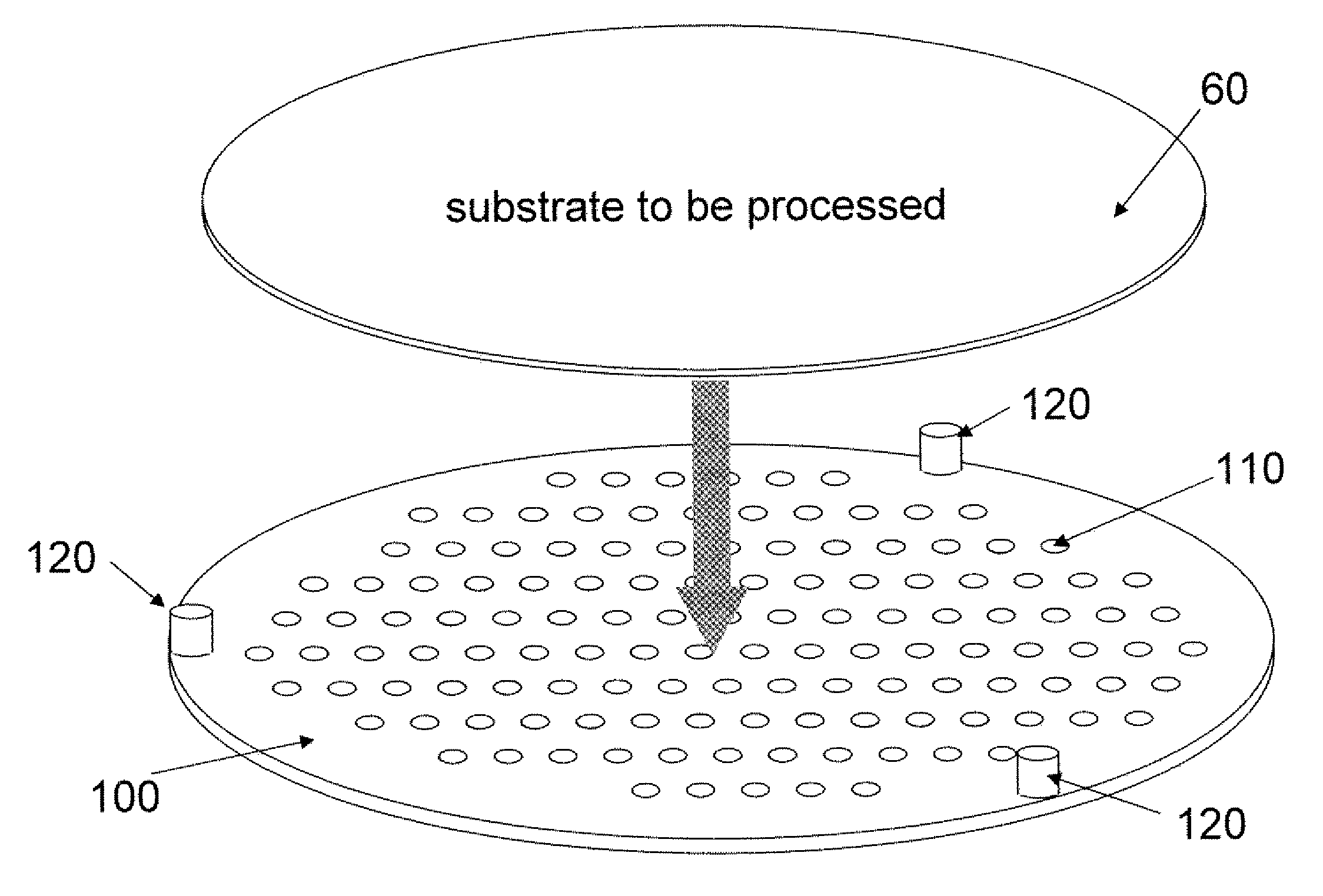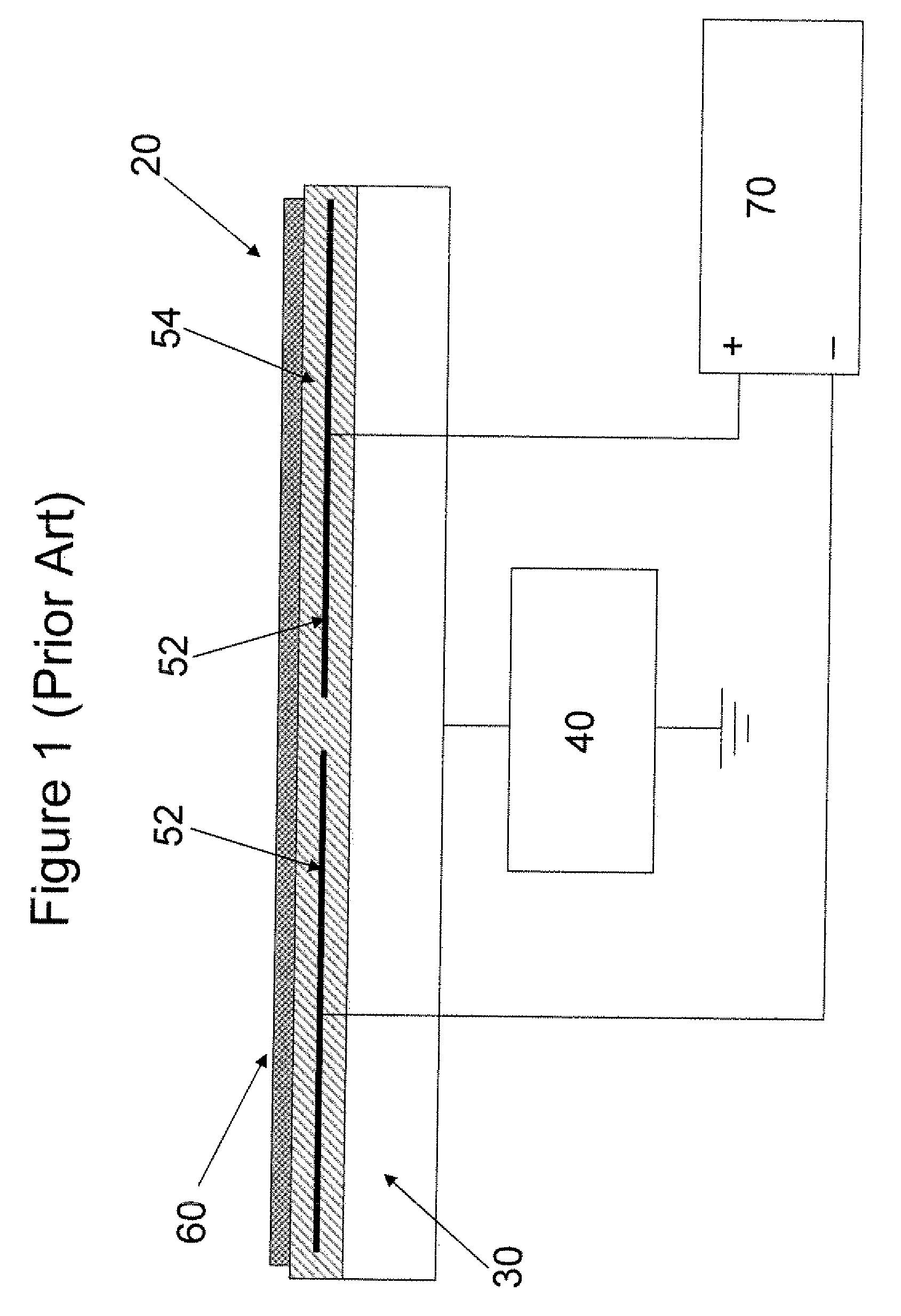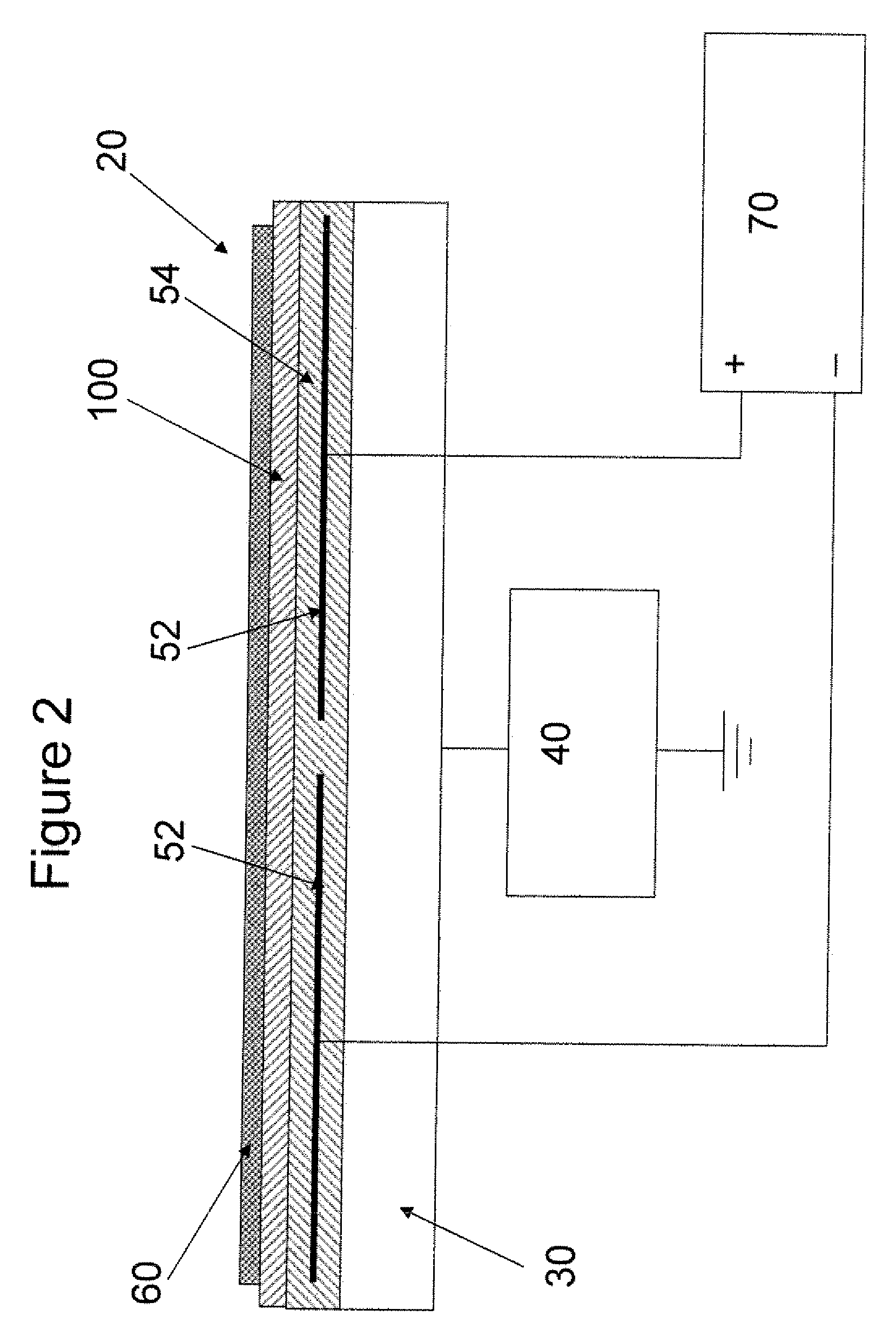Apparatus and Method for Carrying Substrates
- Summary
- Abstract
- Description
- Claims
- Application Information
AI Technical Summary
Benefits of technology
Problems solved by technology
Method used
Image
Examples
Embodiment Construction
[0029]FIG. 1 depicts the fabrication of a typical Electrostatic Chuck as known in the prior art. As shown, a typical Electrostatic Chuck 20 comprises a substrate support electrode 30 which is typically RF powered 40, though a grounded substrate support may also be used, and on which is built the electrostatic component 50. The electrostatic component 50 consists of one or more electrodes 52 which are isolated from the support member 30 by a dielectric material 54 and is also isolated from the substrate 60 by the same or a different dielectric material 54. A power supply 70 applies a voltage to the electrodes 52. The voltage is usually a dc voltage, but it may be cycled, polarity reversed or pulsed in various manners as is well known in the art. The applied voltage generates an electrostatic attractive force to the substrate 60.
[0030]The magnitude of this force is given by the formula:
F=eo / 2*(V*e / (d+e*g))2
[0031]Where:
[0032]F=generated electrostatic force (in Pascals)
[0033]eo=permitt...
PUM
| Property | Measurement | Unit |
|---|---|---|
| Dielectric polarization enthalpy | aaaaa | aaaaa |
| Electrical conductor | aaaaa | aaaaa |
| Fragility | aaaaa | aaaaa |
Abstract
Description
Claims
Application Information
 Login to View More
Login to View More - R&D
- Intellectual Property
- Life Sciences
- Materials
- Tech Scout
- Unparalleled Data Quality
- Higher Quality Content
- 60% Fewer Hallucinations
Browse by: Latest US Patents, China's latest patents, Technical Efficacy Thesaurus, Application Domain, Technology Topic, Popular Technical Reports.
© 2025 PatSnap. All rights reserved.Legal|Privacy policy|Modern Slavery Act Transparency Statement|Sitemap|About US| Contact US: help@patsnap.com



